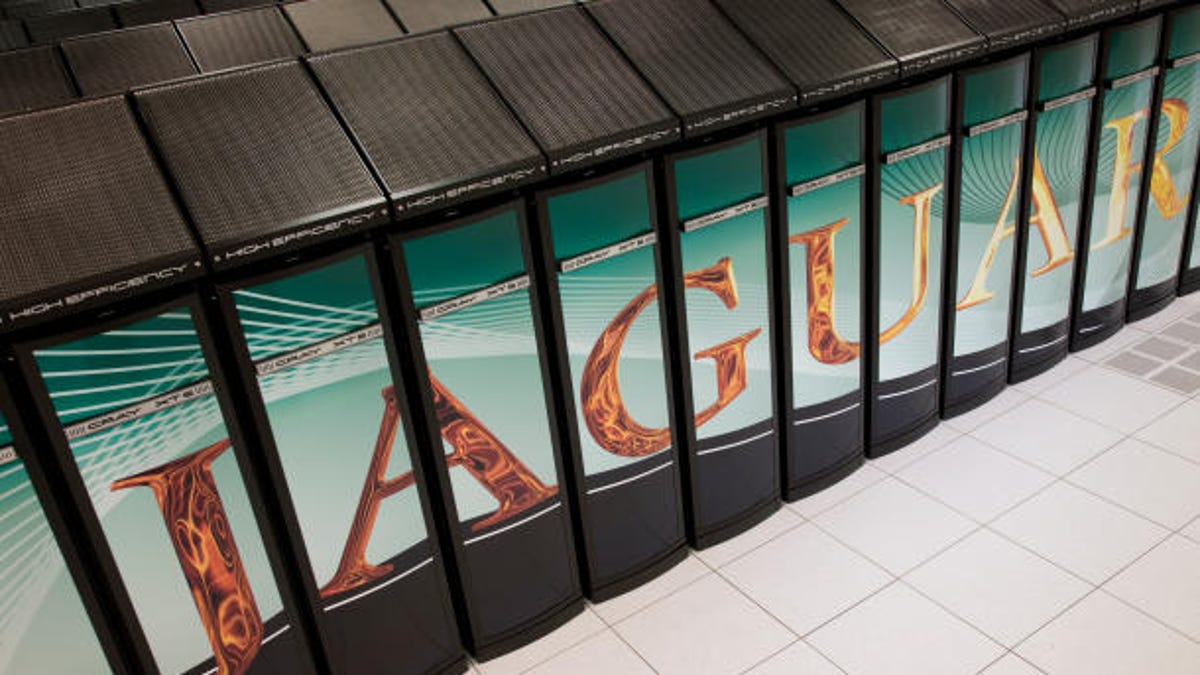Energy Department awards supercomputing time
Largest award of computing time in agency's history goes to 57 projects, including those developing new kinds of jet engines, wind turbines, nuclear reactors, and treatments for brain diseases.

Look at who's logging supercomputing time these days and you are likely to get a glimpse of some major innovations on the horizon.
The U.S. Department of Energy announced today it has just granted the largest award ever of the department's supercomputing time through it's Innovative and Novel Computational Impact on Theory and Experiment (INCITE) program, now in it's sixth year.
The large award, a total of 1.7 billion hours distributed over 57 projects, was partially attributed to the fact that the Energy Department has been expanding its supercomputing capacity, and, therefore, simply has the means to grant more time. But it also reflects a growing interest in using computer modeling now that it has increased in sophistication, according to the Energy Department.
The INCITE program is somewhat like the lottery in that everyone has a chance. The Energy Department has an open application process in which any scientist, whether working in the academic or commercial world, is welcome to submit a request to win supercomputing hours, and it's not restricted to energy-related science.
The winning hours are divided between two supercomputers, the IBM Blue Gene/P supercomputer at Argonne National Laboratory aka "Intrepid," and the Cray XT5 supercomputer at Oak Ridge National Laboratory aka "Jaguar," which recently lost its first place status to China's Tianhe-1A as the world's most powerful supercomputer.
Among these latest 57 recipients, are large companies like Boeing and General Electric that are going to use the time for sophisticated modeling of potential designs for jet engines and wind turbines, respectively. There are also the climate change and earthquake prediction simulation projects, as one might expect.
Most interesting to the energy sector perhaps is the Lithium/Air Battery Project led by Jack Wells, group leader of the Computational Nanotechnology Group at the Center for Engineering Science Advanced Research at Oak Ridge National Laboratory. His team will be running simulations of lithium/air battery reactions. A successful version of the air battery would be capable of storing 10 times the amount of energy as a lithium ion battery of the same weight. Such a battery might make electric cars more competitive compared to gas-powered cars since it would offer greater driving range on a single charge than current models.
A serious commitment to next-generation nuclear power plants might also be on the U.S. energy horizon as several of the recipients are leaders of nuclear energy research projects. The Energy Department's own Argonne National Laboratory Nuclear Energy Advanced Modeling and Simulation (NEAMS) team is going to use its time to test design ideas for a next-generation nuclear reactor. Specifically, it's developing a new type of fast neutron reactor that can partition and transmute the elements contained in spent nuclear fuel to reduce the amount of spent nuclear material that would need to be stored underground post-reactor use.
But the Energy Department supercomputing time was not just granted to energy-related projects or even U.S.-based institutions.
George Karniadakis, professor of applied mathematics at Brown University, scored time to run multiscale simulations of blood flow in the human brain. The information learned could lead to prevention of brain aneurysms and strokes, and a better understanding of diseases like sickle cell anemia. And a team led by Richard Needs, a professor of theoretical physics and a professorial fellow of Robinson College at the University of Cambridge in England, won time to study the behavioral properties of homogeneous electron gas, the charge carriers in semiconductors.
The Energy Department released a report with the full list of projects (PDF) that were granted supercomputing time, and include more technical specifics for each simulation being run.

